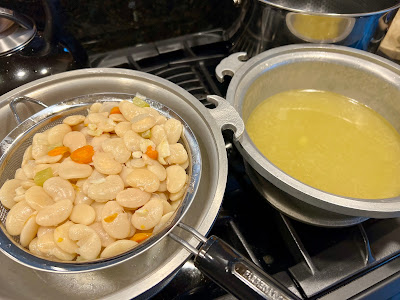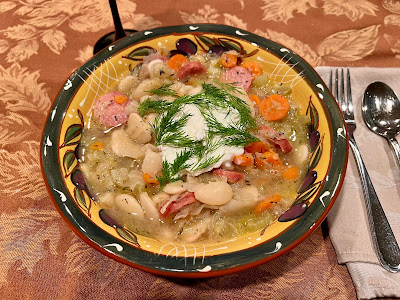Are you eating enough protein at breakfast? Most people
aren’t.
By Anahad O’Connor - Writer for The Washington Post
Optimizing your protein intake can be tricky. It’s not
just how much protein you eat that matters, but when you eat it, and
the foods that you get it from. You may even have higher protein needs than you
think depending on your overall health, your age, your activity levels and
other factors.
Protein makes up our muscles, vital organs and skin cells,
and it influences our metabolism, appetite and immune system. While our bodies
can make some amino acids, which are the building blocks of protein, others we
can only get from eating certain foods.
“We store carbohydrates, we store fat, but we don’t store
protein — so we do need to eat it every day,” said Anne Kozil, a registered
dietitian nutritionist in the food science and human nutrition department at
Colorado State University. “If we consume too little protein for too long then
we resort to consuming our muscle mass as a protein source, which you don’t
want to do.”
We spoke to experts and analyzed studies to identify common
protein pitfalls. Here are six of the biggest mistakes that people make when it
comes to eating protein.
1: Not eating enough protein at breakfast
Think about your daily meals. Are you getting most of your
protein at dinner? It’s common for people to eat relatively little protein
at breakfast, slightly more protein at lunch, and then a high-protein meal
for dinner, Kozil said.
Some studies estimate that Americans on average get
about half their total daily protein intake at dinner alone.
That is in part because chicken, burgers, steak and other
protein-rich foods are dinnertime staples. But many popular breakfast
foods — such as bagels, cereals, breakfast bars, muffins and other
pastries — tend to be relatively low in protein and high in refined
carbohydrates.
That’s a problem because eating protein promotes satiety and
helps to balance your blood sugar levels. If you skimp on protein at breakfast,
then you’re more likely to experience hunger and cravings as the day goes on,
making you more likely to reach for foods such as doughnuts, candy and potato
chips, Kozil said.
Clinical trials in children and adults have found that
when people are given high-protein breakfasts, they tend to feel fuller and are
less prone to snacking throughout the day compared with people who
are given breakfasts that are relatively low in protein.
Kozil said she sees this in her nutrition counseling
practice all the time.
“People tell me ‘I just can’t stop snacking throughout the
day,’ or ‘I’m craving sweets all day,’ ” she said. “And then we work
on getting more protein at breakfast and that helps them a lot. It’s kind of
miraculous. It gives people a sense of control. They don’t feel so out of
control with their food choices anymore.”
Every person’s protein needs are different. But in general,
you should aim to eat about 25 to 30 grams of protein at breakfast, Kozil said.
If you’re far below that number, then increase your protein intake gradually.
If you typically have a bagel for breakfast, then add a scrambled egg or two.
If you eat muffins for breakfast, try switching to a cup of plain Greek
yogurt with some nuts, seeds and berries on top.
Some other good options are cottage cheese, hard-boiled eggs
or breakfast burritos with scrambled eggs, beans and cheese or
avocado. You could also make a smoothie with a high-quality protein powder made
from egg whites or whey, soy, or pea protein.
2: Eating peanut butter because it’s a ‘high protein’ food
You have probably heard that peanut butter has a lot of
protein. Some popular peanut butter brands even boast about their protein
content on their labels.
But in a report published in a top sports
nutrition journal last year, exercise and sports nutrition scientists cautioned
that peanut butter isn’t as high in protein as many people think. The report
noted that peanut butter is an “energy dense” food: Ounce for ounce, it has a
lot more dietary fat and calories compared with eggs, Greek yogurt, lean meats,
chicken breast, beans, fish and other high-protein foods.
Peanut butter is certainly nutritious. It contains fiber,
vitamins, minerals and heart-healthy unsaturated fats. But it contains at least
twice as many grams of fat as protein. You should consider it a great source of
fat, rather than a great source of protein, said Jose Antonio, an author of the
report and a professor of health and human performance at Nova Southeastern
University in Florida.
“If you read the nutrition label on any jar of peanut
butter, you will see that it’s mostly fat,” said Antonio, who is also the chief
executive of the International Society of Sports Nutrition. “The fat is good
for you. But don’t fool yourself into thinking that you’re getting a lot of
high-quality protein.”
Two tablespoons of creamy peanut butter — the amount in
one serving, or one ounce — has about seven grams of protein, 16 grams of fat
and 190 calories.
The authors of the report noted that people who use peanut
butter to help them meet their protein needs should consider eating it in
moderation because of its high calorie density. Otherwise, the
authors warned, they may be setting themselves up for “unintentional weight
gain.”
“Peanut butter is a healthy food, but calories still
matter,” Antonio said. “If you want to gain weight, eat a bunch of peanut
butter. It’s not a great source of protein.”
3: Not eating enough protein as an older adult
The National Academy of Medicine says that the amount of
protein the average adult needs on a daily basis is 0.8 grams per kilogram of
body weight, or the equivalent of 0.36 grams per pound of body weight. This
translates to about 54 grams of daily protein for the average sedentary adult,
around the equivalent of eating four ounces of grilled salmon, a 3-ounce
grilled chicken breast and one hard-boiled egg.
But this amount — known as the recommended dietary allowance
— is just the bare minimum that you need to avoid being malnourished. If you
are an athlete or someone who exercises regularly, then you need to eat more
protein — anywhere from 0.54 to 1 gram of protein per pound of body
weight. You also need to eat more protein if you’re pregnant and in your second
or third trimester (about 0.5 grams per pound of body weight).
But what many people don’t realize is that the protein
requirements also depend on your age. As we get older, our muscle mass starts
to dwindle, and this decline grows steeper after the age of 60. At the same
time, our muscles become less responsive to protein as we get older, which
makes it harder for our bodies to build and repair muscle tissue — a phenomenon
known as anabolic resistance.
“As people age, we have less and less muscle mass, which
makes it even more important to protect the muscle that we have,”
said Katie Dodd, a registered dietitian nutritionist who runs a blog on
nutrition for seniors called the Geriatric Dietitian. “We need muscle to
do everything — even simple things like getting out of bed, walking down the
stairs, and brushing our teeth.”
To counter this age-related muscle loss and anabolic
resistance, it’s critical that older adults eat more than the recommended
dietary allowance for protein, Dodd said. If you’ are 65 or older, you should
aim to eat about 0.45 to 0.54 grams of protein per pound of body weight, she
added. That is about 68 to 81 grams of protein a day for the average senior who
weighs 150 pounds.
Research suggests that a substantial number of older adults
do not consume adequate amounts of protein. One study of older adults
in the United States, Canada, the United Kingdom and the Netherlands found that
up to 30 percent did not meet the recommended dietary allowance of 0.36 grams
of protein per pound of body weight.
4: Eating too much red and processed meats
Studies show that the top sources of protein in the
American diet are chicken and red meat. Not far behind are milk and cheese,
“cured” or processed meats, breads, rolls and other refined grains, and eggs.
But processed meats such as hot dogs, bacon, sausages and
deli meats typically contain a lot of sodium, saturated fat and preservatives.
Red meats such as beef, pork, lamb and veal are also high in saturated fat,
which can increase LDL cholesterol, the kind associated with
cardiovascular disease.
People who eat a lot of red and processed meats may be
at higher risk of cancer, especially colorectal cancer, which has
been rising among young adults. The American Institute for Cancer
Research recommends eating no more than three portions of red meat
weekly, which is equivalent to about 12 to 18 ounces of cooked meat. As for
processed meats, the institute says that you should eat “little, if any.”
5: Not eating enough seafood
Seafood is one of the most nutritious high-protein
foods you can eat. It is chock full of vitamins, minerals and omega-3
fatty acids, an essential nutrient that our bodies need but can’t produce. A
3.5-ounce serving of wild salmon has at least 22 grams of protein —
the amount in nearly four eggs.
Health authorities recommend that you eat at least two
servings of seafood each week. Yet 90 percent of adults in the U.S. fall
short of this goal. If you’re in this group, then you could be missing out
on some major health benefits.
Studies have found that eating seafood promotes brain
and heart health and lowers your likelihood of early death. One
meta-analysis of studies involving about 670,000 adults found that people
who ate the most seafood were less likely to die prematurely from any cause.
People who ate half a serving of fish per day, which is roughly two ounces,
were 12 percent less likely to die early than those who ate little or no
seafood.
The healthiest types of seafood include the following:
- Wild and farmed salmon
- Sardines, anchovies and Atlantic mackerel
- Rainbow trout
- Mussels
- Oysters
6: Not eating enough protein-rich plants
Another healthy source of protein you are probably
overlooking is pulses, which include beans, peas and lentils. Pulses are
brimming with not only protein, but also vitamins, minerals and fiber, a
nutrient that promotes gut health, weight loss and that improves blood sugar
and cholesterol levels.
Eating just a single cup of cooked lentils, black beans or
pinto beans (or a combination of the three) would deliver 15 to 18 grams of
protein and about 15 grams of fiber — more than half your daily fiber needs.
Pulses are also among the most affordable high-protein foods in the
world.
Yet the average American eats only a half cup of
beans, peas or lentils each week — less than the one to three cups that health
authorities recommend.
Many people tend to rely on red and processed meats for
protein while forgetting that there are plenty of excellent plant sources
of protein as well, Kozil said.
“I’m certainly not demonizing meat,” she added. “But I think
beans are the best food in the entire world. They have a lot of fiber — which
we don’t get enough of as a society — and they’re cheap, filling and full of
protein.”
---------------------------------------------------------------------
Have a great week, everyone, and thank you for your support!
Blessed be… and happy cooking!
Chef Michael R
















































